by Eleanor Greene, outreach and communications coordinator, and Michelle Delepine, invasive species program specialist
West Multnomah SWCD is constantly looking to remove highly impactful weedy plants throughout the district. Our invasive species program practices tracking, pulling, and treating with herbicides some of the most harmful weed species in our area. This includes weeds you may have heard of like garlic mustard, spurge laurel, and giant hogweed. But did you know our work doesn’t end on the land?
In recent years, the Invasive Species program at West Multnomah SWCD has expanded to treating aquatic weeds as well. The District purchased a motorboat and four kayaks using a grant from the Oregon Department of Agriculture (ODA).
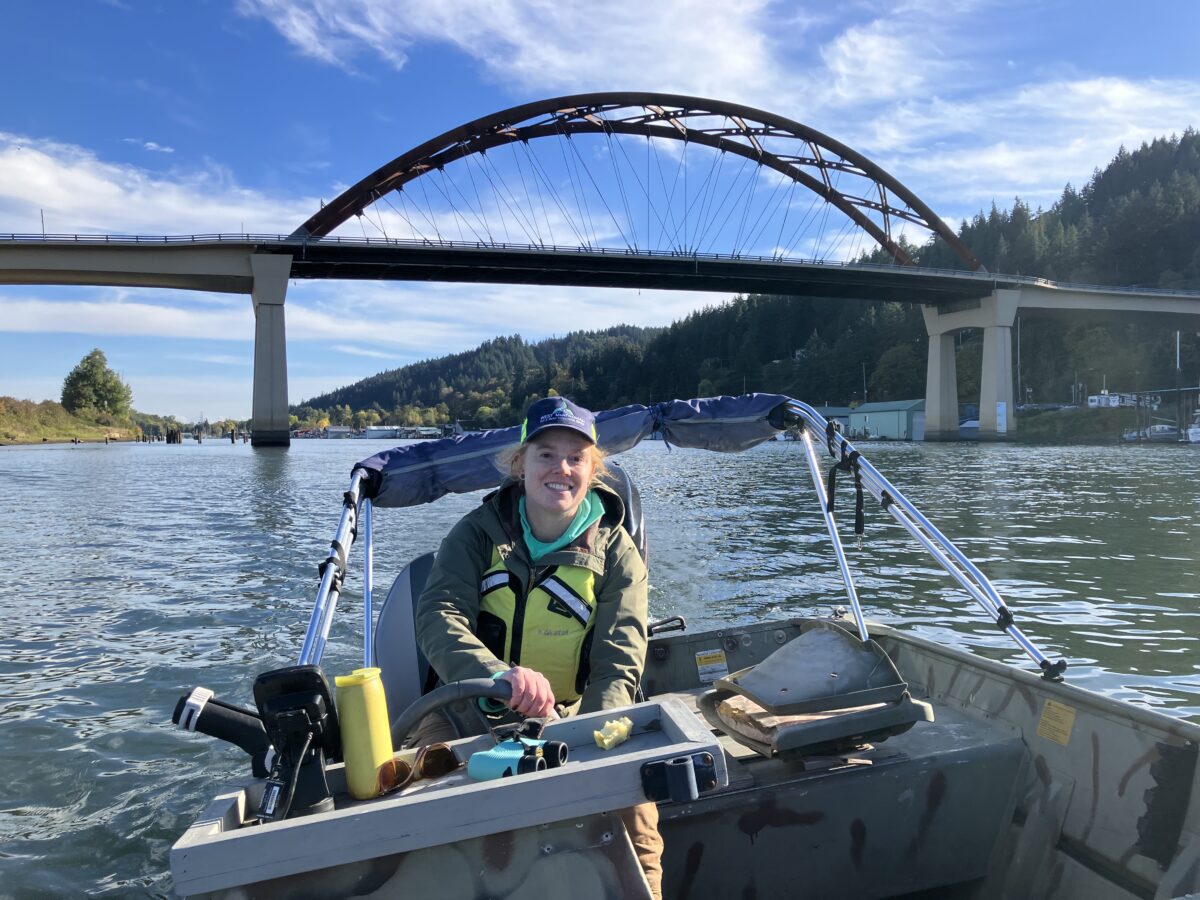
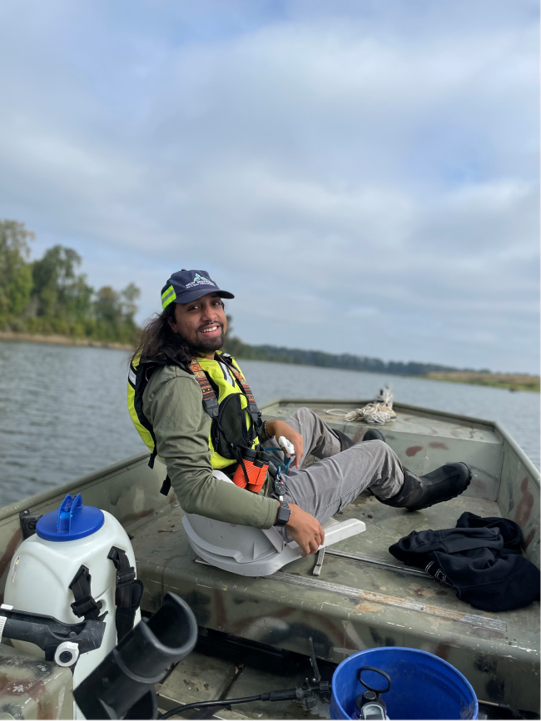
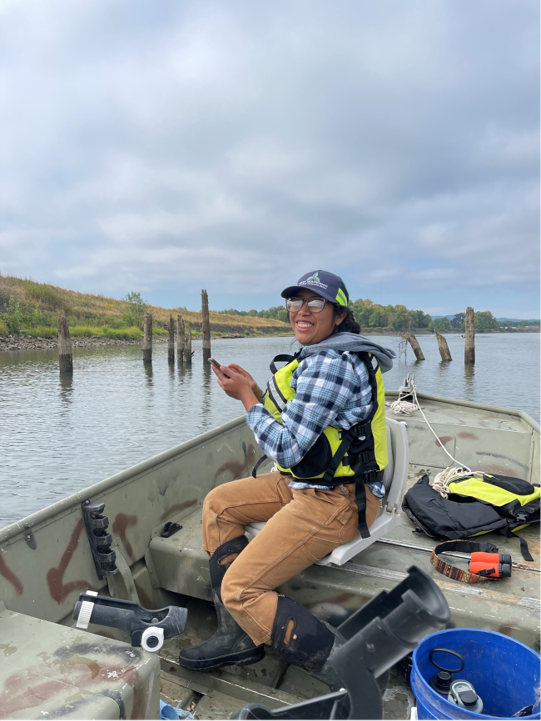
Michelle, Shahbaz, and Martina all got a chance to work on the weed program from our boat this season.
Michelle Delepine, conservationist and invasive species program coordinator, has been with the District since 2011. She explains that the District includes significant areas of waterways—we have the Willamette River running through the District, the Multnomah Channel on the west side of Sauvie Island, Sturgeon Lake on Sauvie Island, and Scappoose Bay to the north. Previously, surveying and removal work was conducted in collaboration with either Portland State University (PSU) Center for Lakes and Rivers or ODA, with our staff going out in one of their boats for just one day each summer.
Using our own boats, aquatic weeds treatment began in 2022 and expanded in the summer of 2023 with surveys from Scappoose Bay down the Multnomah Channel to Linnton Harbor over the course of six days.
What are the Weeds in the Water?
Water primrose (Ludwigia peploides and L. hexapetela) is a dense floating plant that prefers shallow water and has yellow flowers. When it establishes in a location, it spreads relatively quickly, covering the top of the water. This reduces oxygen in the water available to fish and other aquatic animals. Water primrose also can crowd out beneficial plants such as native Wapato, an important Indigenous First Foods source.
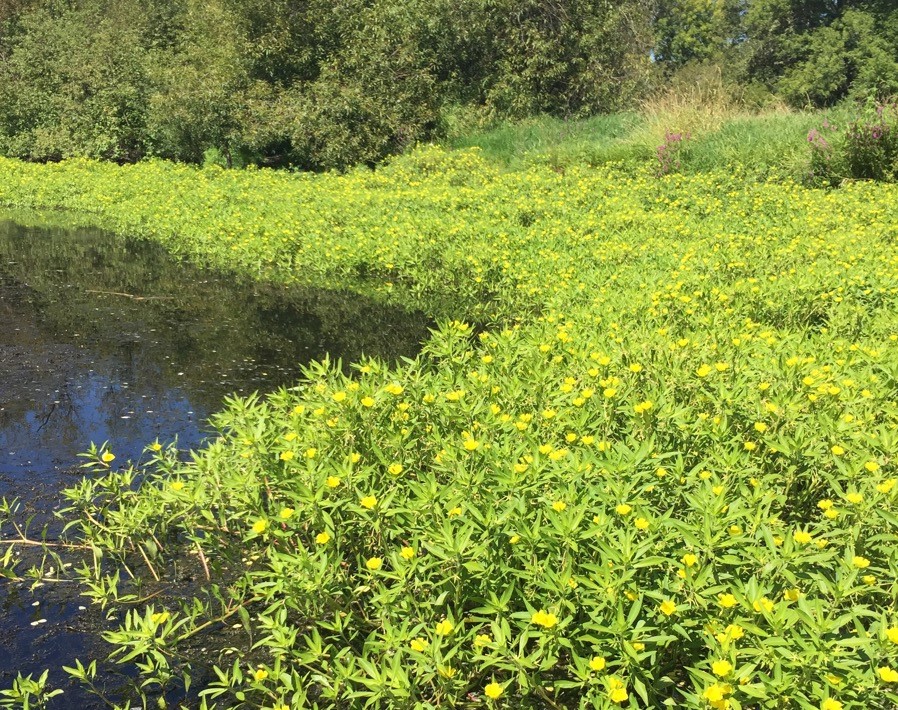
Water primrose (Ludwigia peploides and L. hexapetela)
Common reed (Phragmites australis var. australis) is a genus of reed grass that grows tall in dense stands. It prefers moist soil and can establish in ditches, marshes, estuaries, and wetlands. It causes damage when pushes out native plants, reducing biodiversity and even destroying critical habitat for wildlife.
A staff member treating common reed (Phragmites australis var. australis) on Sauvie Island.

Purple loosestrife (Lythrum salicaria) has striking pinkish-purple flowers, but don’t let them fool you. This plant has already significantly spread to and altered wetland habitats on the east coast over the past several decades and land stewards in the western US are trying to prevent the same from happening here. Because purple loosestrife is so effective at crowding out native plants, it can eliminate food sources and habitat for wildlife. Purple loosestrife goes to seed faster than native plants in the area, so it can spread and outgrow native vegetation.
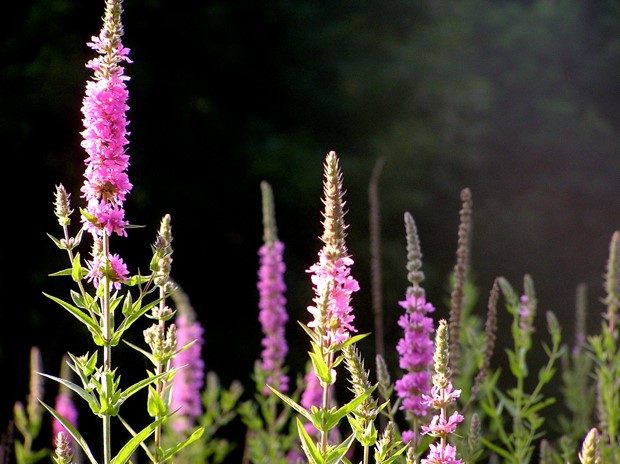
Purple loosetrife (Lythrum salicaria)
Desert false indigo (Amorpha fruticose) is a shrub with dark purple flowers in June that forms dense thickets and thrives along waterways and floodplains. Its fruiting pods float in water to new locations. Though it is native to and not overly prolific in the Southern U.S., in the Pacific Northwest it spreads rapidly, grows thickly, and crowds out other plants. Desert false indigo is only managed as an “early detection, rapid response species” (EDRR) in Scappoose Bay. That means WMSWCD and SBWC treat it as a high priority within the boundary of Scappoose Bay.
Desert false indigo (Amorpha fruticose)
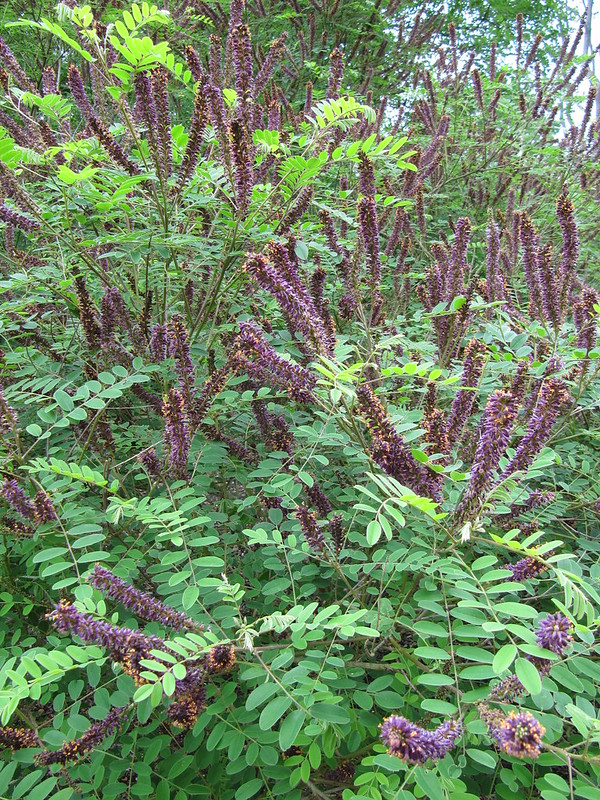
You can read more about these and other invasive plants and bugs on our Invasive Species Database.
The Survey
As part of the survey in August 2023, Michelle, conservation technicians, field interns, and partners from Scappoose Bay Watershed Council spent three days surveying on the motor boat and four days surveying from kayaks on the shallower waters of Scappoose Bay.
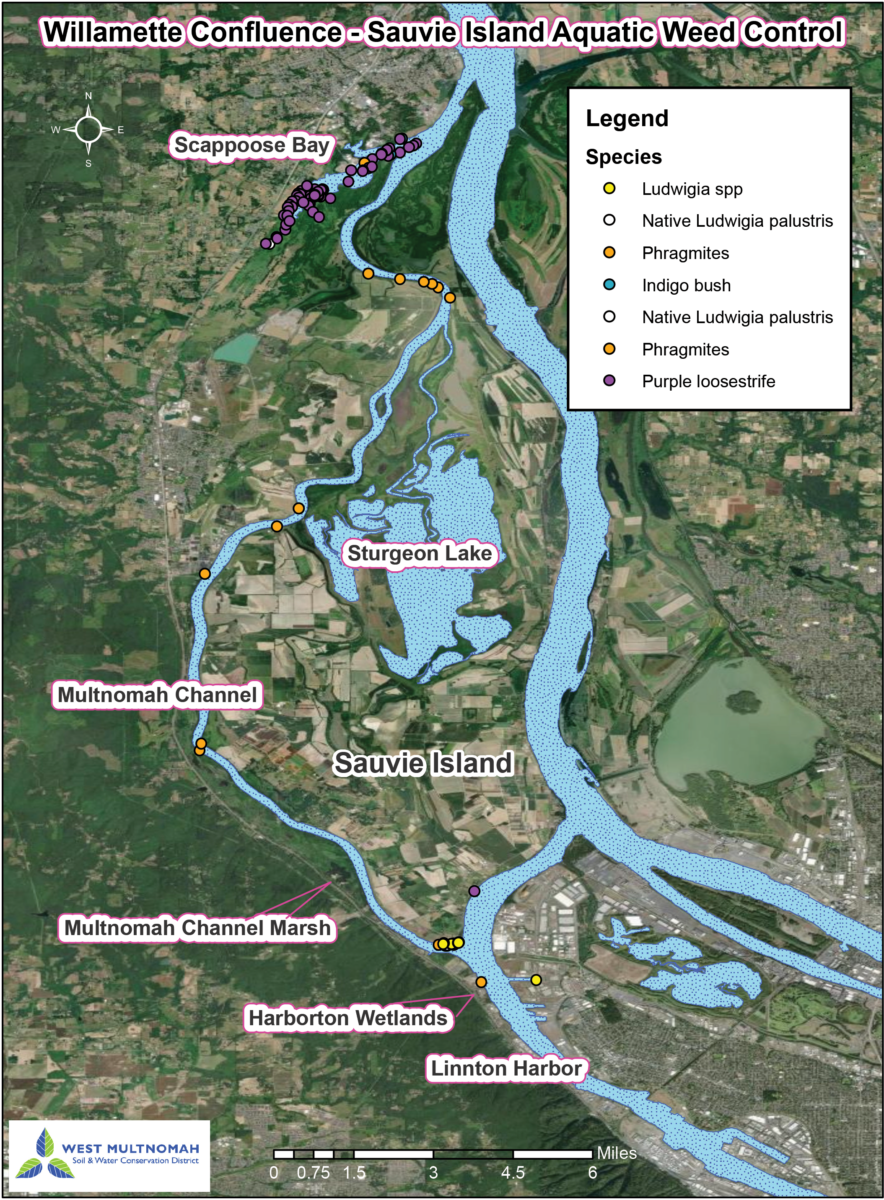
We also have spent several years surveying the banks of Sturgeon Lake, the largest lake on a river island in the US, in the middle of Sauvie Island. This work involves using kayaks as well as drone imagery. To date we have found indigo bush and purple loosestrife, but other aquatic invasives have not been seen during these surveys.
Overall, the survey covered about 2,450 acres. All patches of water primrose and common reed were controlled using best management practices, including hand-pulling and herbicide application. Desert false indigo brush was controlled in Scappoose Bay. District staff, Scappoose Bay Watershed Council staff, and volunteers removed purple loosestrife in the bay by hand in September 2024. One of the problems with the extreme density of aquatic weeds is that they can be challenging or impossible to access on foot.
| Weed species | Area | Patches |
| Ludwigia | 3795 sq ft | 13 patches |
| Phragmites | 6800 sq ft | 14 patches (7 patches no longer found as of October 2023) |
| Purple Loosestrife | 20,200 sq ft | 64 patches |
| Indigo bush | 400 sq ft | 2 patches |
What’s Next?
District staff will continue to expand aquatic survey areas, and monitor and manage previously found infestations. Next, we plan to add the eastern side of Sauvie Island along the Columbia River to our survey area. We also will continue to expand our survey areas around the perimeter of Sturgeon Lake.